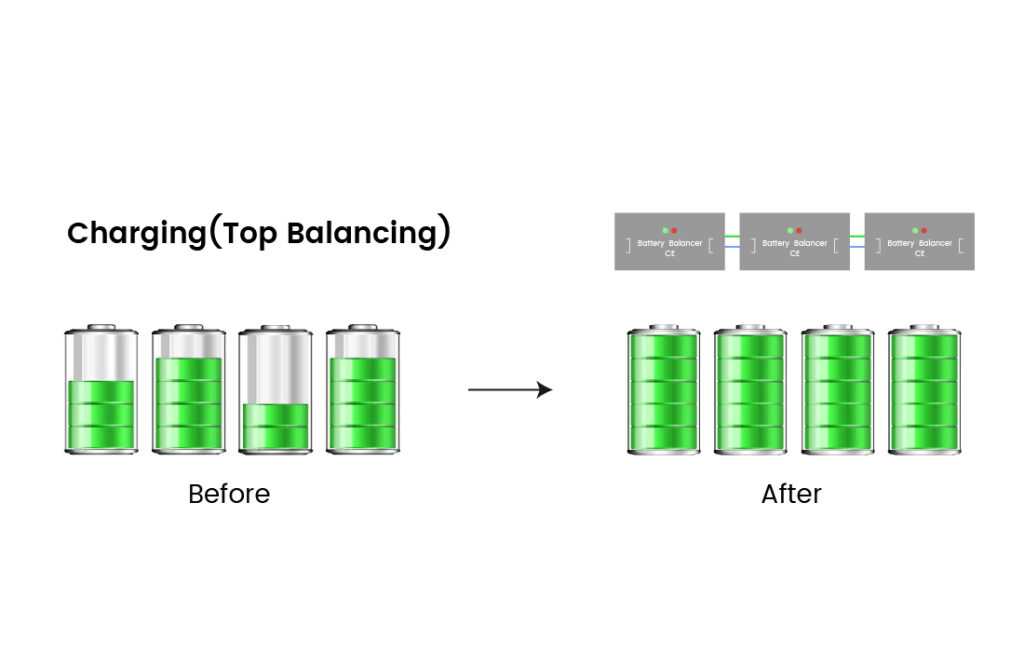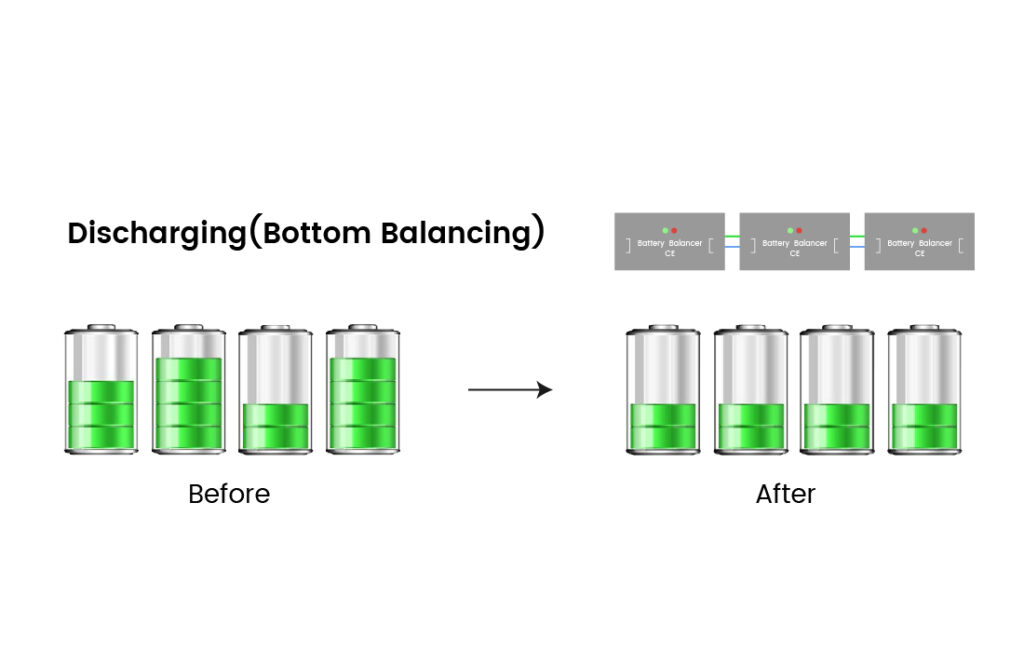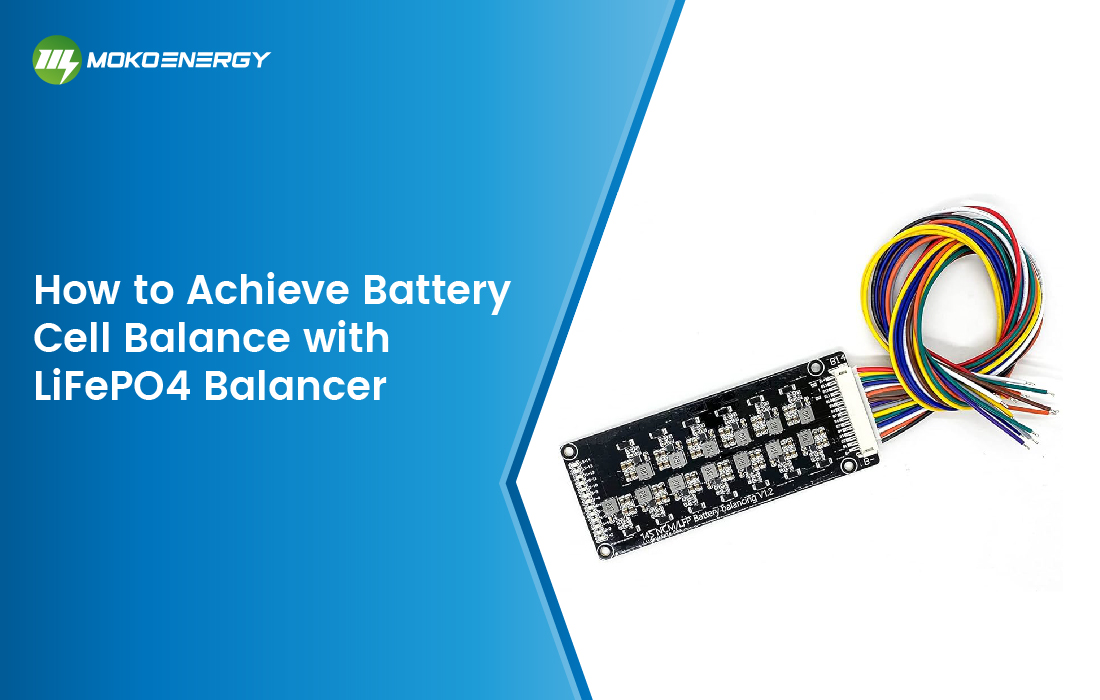When we get a new LiFePO4 battery, it is normally in mint condition. Their voltage and capacity are also equalized under ideal conditions. But in reality, every battery will have more or less errors in charging amount when it is shipped from the factory. And during transportation, the cells are also affected by multiple factors, resulting in certain capacity and voltage variations. LiFePO4 cell balancing is necessary for the battery to perform optimally. Simply put, LiFePO4 balancer is used to balance the voltage and capacity of each cell in the battery pack.
Why is It Necessary to Balance The Cells?
In the same LiFePO4 battery pack, if there is an imbalance in the cells, the smaller capacity cell will discharge faster when charging. This will limit the continued charging of the other higher capacity cells in the battery pack. And the cells may also become unbalanced in terms of voltage. In this case, the higher voltage cell will have a different cutoff voltage compared to the lower voltage cell, resulting in excess performance. In addition to affecting the performance of the battery, battery imbalance may also cause other safety problems, such as overcharge or overdischarge. Therefore, LiFePO4 cell balancing is a must.
How to Balance LiFePO4 Battery?
Top balancing and bottom balancing are two strategies used to ensure the cells in a LiFePO4 (lithium iron phosphate) battery pack have the same state of charge (SOC) and voltage, which is crucial for maintaining battery health and performance.
Top Balancing

Top balancing focuses on filling all the cells to the same ratio when they are full. This is done by allowing the charge current to flow into the battery cells and monitoring the voltage of each cell until all of them go to the same value at the top end of the charge cycle. When a particular cell achieves the voltage of the target value, the charging path of the cell is interrupted in the balancing circuit through a shunt to avoid overcharging the cell while the other cells will continue charging up to the target voltage.
Advantages:
-Ensure that all of the cells are fully charged and have the highest usable energy of the battery pack.
-Balances charging currents, thus avoiding overcharging of specific cells that may endanger cell or degrade the entire battery.
Bottom Balancing

Bottom balancing performs in an attempt to try and make cell voltage when they are flat as one. This focuses on making certain that every cell dips to the same low voltage level at the bottom of the discharge cycle. This balancing circuit will help cells that reach the minimum voltage to stop discharging the first and allow the other cells to continue to discharge until they reach the minimum voltage.
Advantages:
-Improbables the deep discharge of individual cells which must be damaged due to their delicate nature.
-Useful in applications where battery packs are fully drained regularly and need to be recharged.
Do You Need A LiFePO4 Balancer?
Yes, generally a LiFePO4 balancer should be used for top balancing as well as bottom balancing technique. The balancer refers to an electronic circuit or simply a module responsible for detecting individual cell voltages in the battery pack and, in the process, actively compensating for them when required.
In top balancing, the balancer can initiate the shunt resistors or bypass circuits to release energy from the cells with a higher capability.
In the case of bottom balancing, the balancer is directly involved in controlling the charge shuttling process to reduce the disparity and transfer the energy from the cells of higher capacity to cells of lower capacity through dedicated circuitry.
LiFePO4 balancers are used specifically for LiFePO4 battery chemistry since they consider the peculiarity of the batteries as well as the voltage levels. The balancer designed for other battery chemistries like lead-acid or lithium is not efficient or viable to use in the LiFePO4 battery pack.
Top balancing and bottom balancing techniques are applied for LiFePO4 cell balancing and, normally, a LiFePO4 balancer should be used to maintain safe battery pack operating conditions.
Notice
Some tips for balancing LiFePO4 cells are:
– Do not go unattended to your cells when top balancing them.
– High voltage should not be exceeded, 3.65v when top balancing.
– In this case, do not perform top balance for your cells too often or for too long because it will create more strain and heat for your cells.
– For your pack, it is desirable to use a smart BMS to monitor and protect its cells during charge-discharge.






